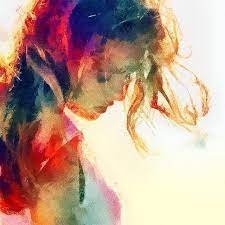Art and Emotions
Why are art and emotion so closely linked? Every time we pick up our pencils, dip our brushes in paint or begin chipping away at rock or wood, we are creating emotional art, whether we realize it or not. But, when we're at work, what's actually going on in our heads?
Artists have attempted to connect with their audiences in a variety of ways throughout history. Whether through the use of specific colors, the representation of specific scenes, or the communication of symbols that work on a subconscious level, each work of art is intended to communicate a message to the audience as seen through the artist's eyes.
Our emotional and aesthetic responses to art were previously thought to be based on a basic stimulus, according to the study. However, new research by Pinchas Noy and Dorit Noy-Sharav has discovered that human reactions to art are significantly more complex. These new theories suggest that when we look at art, we're relying on associations that extend back to human evolution's beginnings.
Let’s explore some scenarios of the relationship between emotions and art.
Emotional Art And Symmetry
Symmetry has always been a popular theme in art, and for good reason: we're wired to seek it out. Our cave-dwelling forefathers sought symmetry (particularly, bilateral symmetry) to aid them in making certain decisions, whether it was avoiding predators, seeking prey, or finding a mate. Given this, it's no surprise that some of the most beautiful people on the planet also have the most symmetrical features.
Happiness And Wide Open Spaces
Most of us feel a deep feeling of tranquility when we're in broad open spaces, whether we're standing on top of a mountain or having a lonely walk on the beach or in the countryside. We already know that art may evoke similar sentiments, but new research suggests that the reasons for this link between art and emotion date back to our prehistoric ancestors. Simply said, our forefathers realized that having a clear, open view was beneficial. It meant they could walk without fear of being attacked by predators. It meant that there were no lurking dangers in the shadows. Bright paintings with a sense of free space, on the other hand, generate similar sentiments of relaxation or happiness in viewers, whereas gloomy, oppressive works of art make people feel more worried. When we gaze at a work of art, we are effectively gazing through the eyes of our forefathers.
Emotional Reactions to Art
Of all, most people's reactions to art are more complex than just happy or sad. We connect with a painting, drawing, sculpture, or installation on a complicated emotional level, or what some psychologists refer to as “meta emotions.'
What exactly are these? They occur when multiple emotions are elicited at the same moment. They occur when a piece of art successfully communicates both intricacy and technical expertise. They're the moments when we're fully immersed in the emotive art in front of us. For example, an expertly painted depiction of Christ on the crucifixion will satisfy our desire for symmetry while also affecting us on a deeper emotional level. Consider what would happen if the image of Christ wasn't as well-painted — say if the anatomy was blatantly inaccurate. Is it still going to get the same response? No, according to research. Everything appears to have to be precisely blended for a work of art to elicit meta emotions in us. Surprisingly, the same holds true for a technically flawless depiction of something devoid of passion. Can you recall the last time a technical drawing moved you?
Changes in Perception and Concept
We build mental connections as infants in order to grasp simple concepts. And it is frequently here that the connection between art and emotion is established. For example, we recognize whether the family pet is a dog or a cat, and we quickly discover that food is kept in the kitchen cabinets and refrigerator! However, as we grow older, we learn to identify specific visuals with feelings, and these associations become more conceptual. For example, we may come to link a sunny day with outside activities such as playing at the park. When we make or look at art, these conceptual linkages in our brain play a huge role. Every mark you make, every color you use, and every image you see elicits a variety of reactions in you. Some of these emotional reactions to art are unique to you, while others are more deeply anchored in the collective human mind.
When you make art, what happens?
When you create art, you're forming profound bonds. You're fusing your own feelings and concepts with your technical expertise. You're attempting to share your own life experiences with your audience. You're creating emotional art whether you realise it or not. When making selections about your composition, topic matter, and colours, you're engaging the subconscious regions of your mind. Consider our forefathers and mothers: might the landscape you're painting have a deeper meaning than you realise?
It takes time to learn how to interpret hidden emotions into art and transmit them to others. It's all part of the process of becoming an artist. There can be occasions when others do not understand what you are attempting to convey. To be able to grow and learn from this - to properly connect art and emotion – is to go on a wonderful journey that dates back to the past generations.



